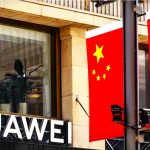The Chinese government’s recent release of its 19th White Paper on Tibet has raised concerns due to what appears to be manipulative semantics. Titled “CPC Policies on the Governance of Xizang in the New Era: Approach and Achievements,” the paper employs a distinct shift in language, consistently using “Xizang” instead of the more widely recognized term “Tibet Autonomous Region.” This linguistic choice is seen as a deliberate effort to assert control over the narrative surrounding the region.
The document, issued by China’s State Council Information Office, asserts that the Communist Party of China’s (CPC) governance guidelines in the new era have led to significant progress and historic success in various aspects of Xizang’s development. However, critics argue that the primary objective of this propaganda exercise is to redefine the geographic and political boundaries of Tibet.
One noteworthy departure from previous conventions is the limited use of the term “Tibet,” which is now reserved for specific entities such as “Tibet Airlines,” “Aid-Tibet Exhibition Hall,” and the “Qinghai-Tibet Plateau.” Notably, the white paper refrains from using “Tibet” in a broader context that includes historically Tibetan territories merged with other Chinese provinces.
This semantic shift aligns with a persistent disagreement between the exile Tibetan leadership and the Chinese government in settlement talks over the Tibet issue. The former seeks autonomy for a “Tibet” that encompasses all historically Tibetan territories, a proposition categorically rejected by China.
Beyond the linguistic nuances, the white paper is characterized as a platform for propagating a positive image of the situation in Xizang. Laden with familiar propaganda jargon and euphemisms, the document aims to counter recent international criticisms directed at Beijing’s human rights record, socio-economic conditions, and environmental policies in the region. These critiques have intensified in the wake of President Xi Jinping’s ambitious drive to assimilate Tibet and other ethnic minority regions under the banner of Sinicization.
In light of these developments, the white paper’s strategic use of language and its selective terminology underscore the ongoing complexities and challenges surrounding the Tibet issue. As international scrutiny continues, observers remain vigilant about the potential implications of such manipulative semantics on the broader discourse and understanding of the region.















Comments